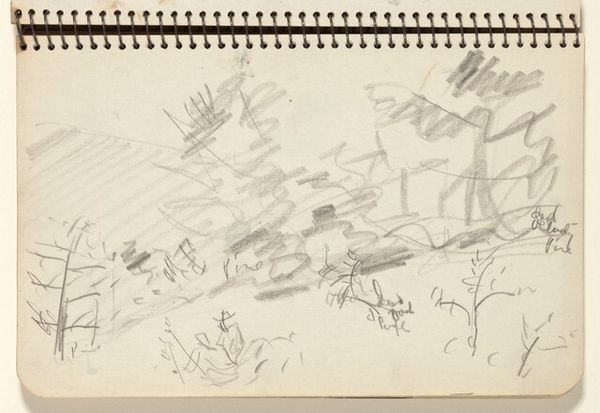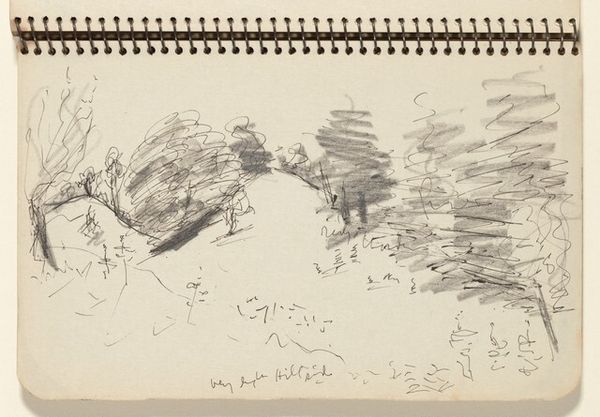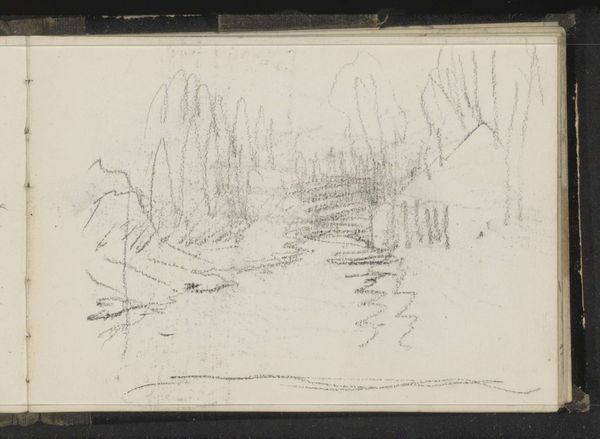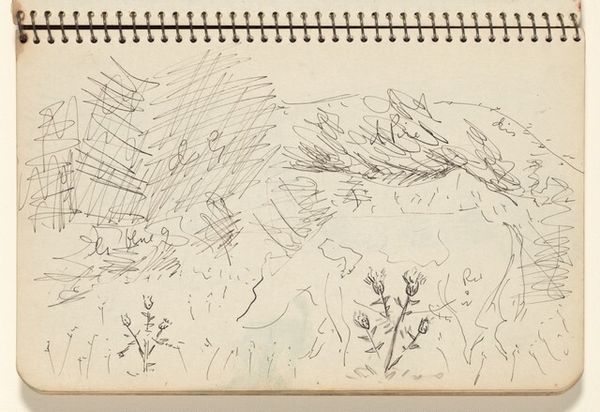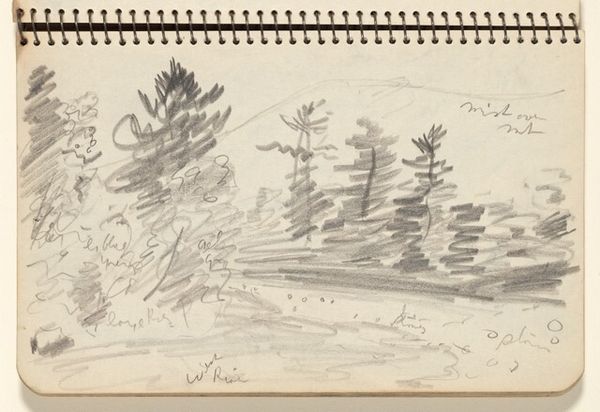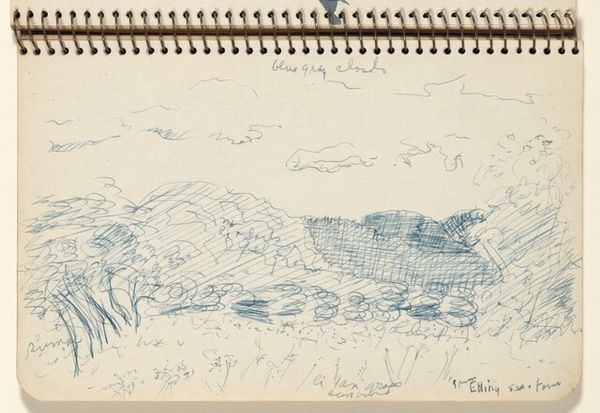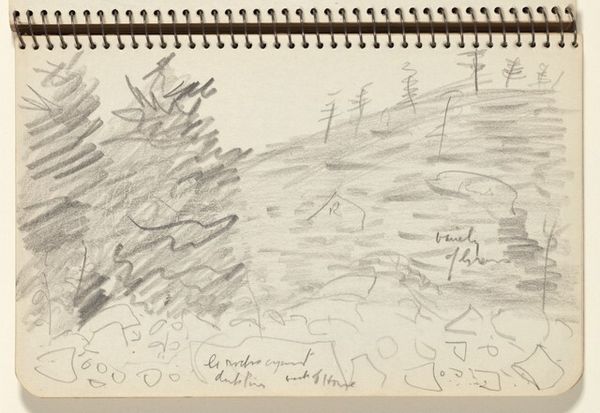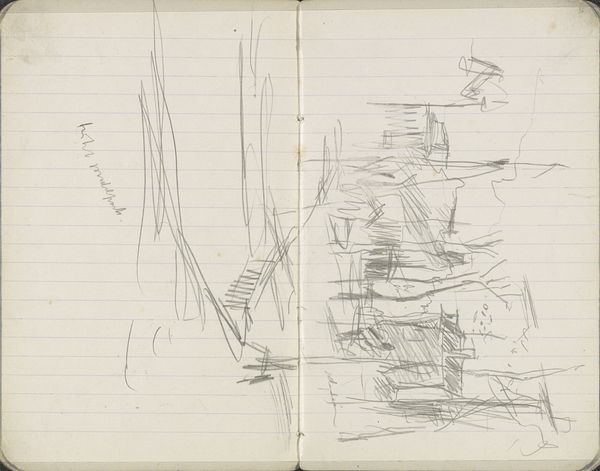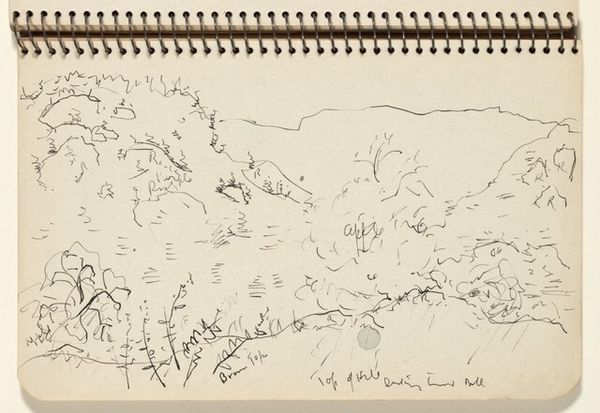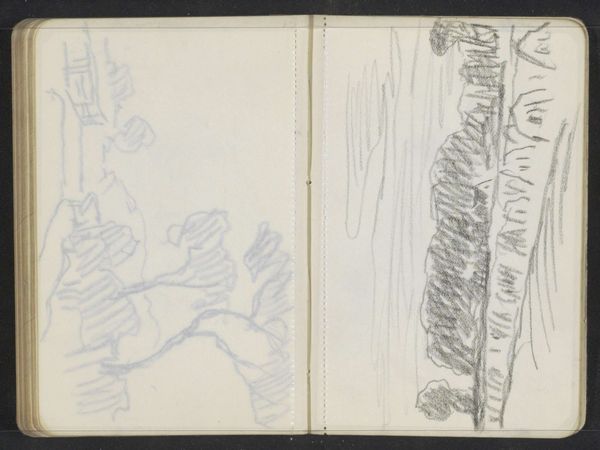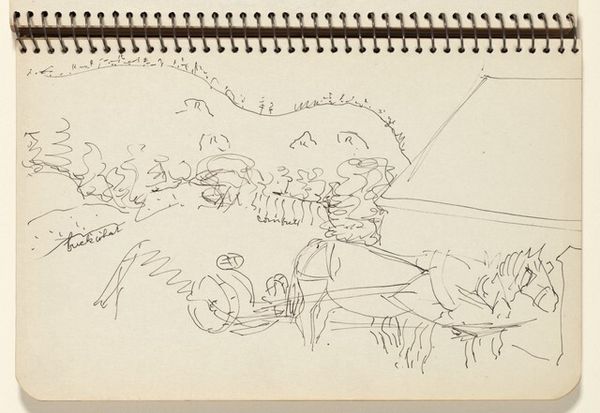
drawing, ink, pen
#
drawing
#
blue ink drawing
#
pen sketch
#
landscape
#
personal sketchbook
#
ink
#
ink drawing experimentation
#
pen-ink sketch
#
abstraction
#
line
#
pen work
#
sketchbook drawing
#
pen
#
watercolour illustration
#
sketchbook art
#
doodle art
Dimensions: overall: 12.8 x 20 cm (5 1/16 x 7 7/8 in.)
Copyright: National Gallery of Art: CC0 1.0
Editor: Here we have Milton Avery’s "Landscape" from 1943, a pen and ink drawing on paper. I’m immediately struck by the sketch-like quality, almost like a doodle. What do you see in this piece, particularly focusing on the formal aspects? Curator: Certainly. Initially, it is paramount to observe how Avery articulates form through line. The density of hatching creates areas of tonal variation, suggesting depth and shadow, despite the lack of color. Consider how the line itself functions – energetic, almost frenetic in places, particularly within the larger tree, contrasting with the more restrained lines defining the distant trees. This use of line is, itself, the primary expressive device. Editor: So, the way he uses line dictates the visual weight and depth? It’s interesting how he creates texture with such simple marks. Curator: Precisely. Think about the composition as a whole. Avery eschews traditional perspective. The spatial relationships are established through the layering and relative scale of forms. Do you notice any compositional strategies at play? Editor: Yes, I see what you mean. The forms seem built up through repetitive lines, but their arrangement provides the structure of the scene. It looks effortless but there is an inherent system, as if all parts were well measured for unity. Curator: Indeed. Avery uses simplicity and near abstraction. Though representing landscape, the artwork’s significance is how he simplifies shapes into marks, exploring basic relations. It reveals underlying relations inherent in form and medium. Editor: It’s fascinating to see how much information he conveys with so little. I came in thinking doodle, but it is so carefully calibrated in form. Curator: Observing and understanding this is the value of formal analysis - it refines your awareness to art, especially abstract form. The landscape offers visual stimulation that rewards viewers each time we carefully and intentionally revisit this simple landscape.
Comments
No comments
Be the first to comment and join the conversation on the ultimate creative platform.

